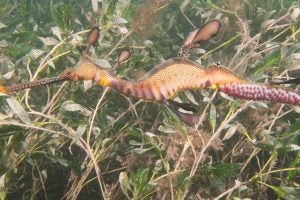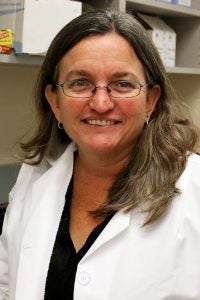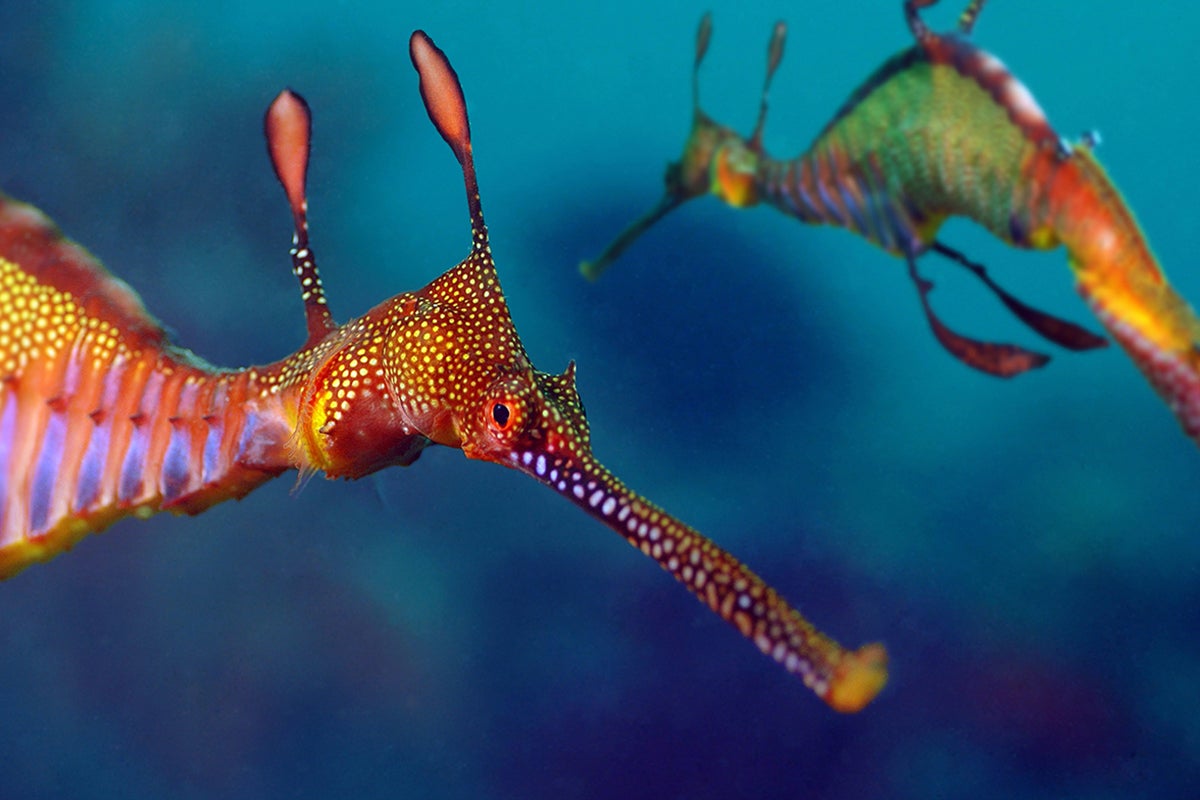The genetic expertise of University of Central Florida researchers is extending all the way to the land down under in a new study of a unique animal of Australia’s waters – the weedy seadragon.
In the study, which appeared recently in the journal PLOS One, UCF researchers helped discover that the weedy seadragon found off the coast of Victoria, Australia, is a distinct population and may even be a distinct subspecies. That’s important because weedy seadragons used for the aquarium trade often hail from this area, and they may need careful management to preserve the species’ overall genetic diversity.
“We found the Victorian population was quite distinct and may be in the early stages of speciation, or forming its own species,” says Michelle Gaither, an assistant professor in UCF’s Department of Biology and study co-author. “From a conservation perspective, this means we need to look at how to manage it differently. For example, there may need to be limits on harvesting it for the aquarium trade.”

Weedy seadragons look like stretched-out seahorses with long jaws. They are usually a little a foot in length and use their natural camouflage to hide in the kelp and seaweed near the shoreline of the southern coast of Australia. The specimens in the aquarium trade are bred in captivity but often originate from the southeast coast of Australia, near the state of Victoria.
Seadragons in general don’t swim long distances and typically stay close to home, thus creating situations for distinct populations to form. The researchers identified four distinct populations in their study. Those from Victoria were particularly divergent.
Since one population may be better adapted than others to surviving ever-changing climate and ocean conditions, conserving each one is important to the survival of the species and ultimately the ecosystem, Gaither says.

“Biodiversity is about system resilience, and a system with all its parts intact is more resilient to change than one that is impaired,” she says.
There are several species of seahorses and pipefish in Florida that have similar life history strategies, Gaither says.
“Thus, the species here in Florida are also likely to have subpopulations on small spatial scales, but few studies have been done,” she says.
Gaither is an expert in genetics and marine fish biodiversity. One of her lab’s projects is to develop tools to better survey populations of dwarf seahorses, whose range includes Florida’s coasts and whose populations are declining. She is part of a network of biodiversity researchers around the world studying these issues. The samples were collected in Australia, and the analyses of the genetic data were performed at UCF.
UCF biology doctoral student Samuel Greaves assisted in the analysis.
“Understanding what species are out there and their relationships is the first step in conserving biodiversity,” Greaves says. “This was my first project at UCF and a great opportunity for me to learn and use the resources of our Genomics and Bioinformatics Cluster.
Weedy seadragon tissues were obtained from underwater surveys performed between 2016 and 2019 at five sites off Australia’s southern coast and from deceased seadragons washed up onshore and collected by citizen scientists. Researchers used next-generation sequencing to uncover the four distinct genetic clusters: central New South Wales, southern New South Wales, Victoria and Tasmania. High-resolution images were analyzed to determine differences in size and shape.
Study co-authors were O. Selma Klanten, lead author and research scientist with the University of Technology Sydney; Kade Mills, a ReefWatch coordinator with the Victorian National Parks Association; Kristine O’Keeffe, a researcher with the Underwater Research Group of New South Wales; John Turnbull, a postdoctoral fellow with the University of New South Wales and a researcher with the Underwater Research Group of New South Wales; Rob McKinnon, a senior project officer with the New South Wales National Parks and Wildlife Service; and David J. Booth, a professor of marine ecology with the University of Technology Sydney.
The work was funded by the Sea World Research and Rescue Foundation Inc.
Gaither received her doctorate in zoology from the University of Hawaii at Manoa and joined UCF’s Department of Biology, part of UCF’s College of Sciences, in 2017. She is also a member of UCF’s Genomics and Bioinformatics research cluster.





